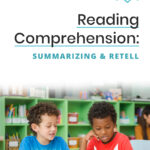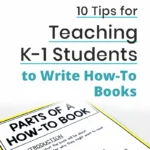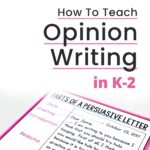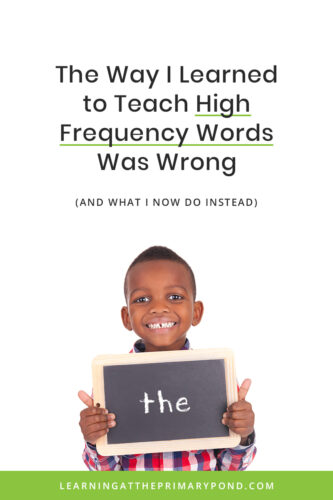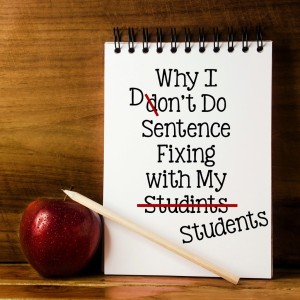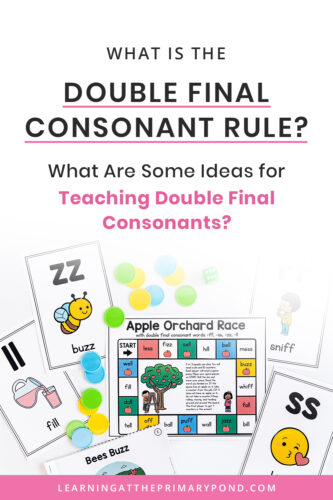A writing rubric is a great tool for assessing students’ writing. A good rubric helps you understand what students can already do, and what you still need to help them with. But teaching writing in Kindergarten is a little different! If you’re wondering what a high-quality, developmentally-appropriate Kindergarten writing rubric should include, then you’re in the right place!
What Is a Writing Rubric?
When you grade certain assignments (like a math quiz), you can easily mark things as correct or incorrect. Then, you can total up the number of questions a student got correct. But you can’t do this for every type of task! This is where rubrics come in handy.
A rubric is a scoring tool that allows us, as teachers, to evaluate student work or performance based on a set of criteria. A rubric usually lists out multiple qualities that are expected, but it gives a range (i.e. meeting expectations, below expectations, above expectations, etc.).
Rubrics can be used by a teacher, for self-evaluation by a student, and/or to help students give feedback on a peer’s work. Rubrics can also be sent home to help parents understand how kids are performing at school.
Here is an example of what a Kindergarten writing rubric might look like. This example is for narrative writing and comes from this set.
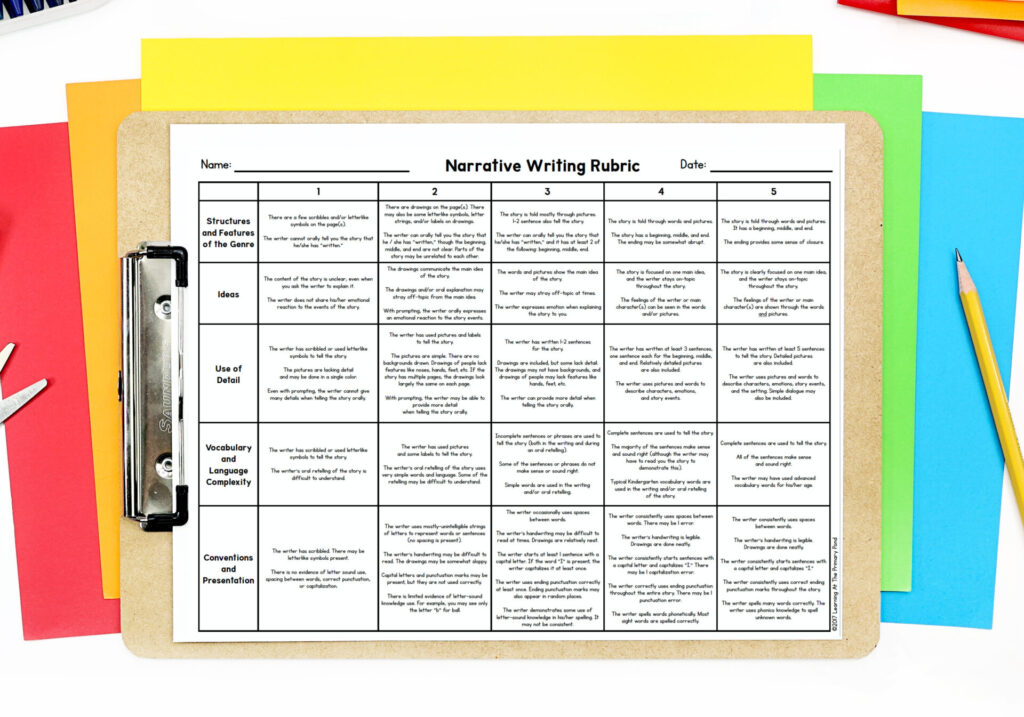
We will take a closer look at what’s included on the rubric in a moment, but first I want to point out a few things:
- The rubric ranges from a scale of 1 to 5, at the top. 4 is the target, and 5 exceeds expectations. (Rubrics don’t always need to be on a 5-point scale. Sometimes they are on a 3-point scale, a 4-point scale, or a 6-point scale.)
- Different aspects of writing are listed on the left-hand side. These include structures and features of the genre, ideas, use of detail, vocabulary and language complexity, and conventions and presentation.
What is Appropriate for a Kindergarten Writing Rubric?
At the beginning of the school year, many Kindergarteners are not writing at all! This is perfectly normal. But this is also why a Kindergarten writing rubric needs to be a little different from writing rubrics for older students in first grade and up!
The Kindergarten narrative writing rubric (in the photo above, and also what we are about to discuss here) is something I start using after I’ve taught an entire unit of narrative writing to my Kindergarten students, several months into the school year.
My expectation as a Kindergarten teacher is not that students are at a 4 (mastery) by the end of this first unit. I’m aiming for a 3 at this point. Later in the school year, I teach another narrative writing unit, and then my goal is for students to be at a “4.”
With all of that said, let’s dig into what’s on the rubric! (Remember, this is a narrative writing rubric. I also have an informational writing rubric and an opinion writing rubric for Kindergarten in this pack.)
Structures and Features of the Genre
When kids learn to write in a specific genre, they need to learn what that genre is like. For example, a story has a beginning, middle, and end – but an opinion piece will state an opinion and give reasons.
Here is what is on the Kindergarten narrative writing rubric for this category:
- 1 — There are a few scribbles and/or letterlike symbol(s) on the page. The writer cannot orally tell you the story that they have “written.”
- 2 — There are drawings on the page(s). There may also be some letter-like symbols, letter strings, and/or labels on the drawings. The writer can orally tell you the story that they’ve “written,” though the beginning, middle, and end are not clear. Parts of the story may be unrelated to each other.
- 3 — The story is told mostly through pictures. 1-2 sentences also tell the story. The writer can orally tell you the story that they have “written,” and it has at least 2 of the following: beginning, middle, end.
- 4 (END OF YEAR GOAL) — The story is told through words and pictures. The story has a beginning, middle, and end. The ending may be somewhat abrupt.
- 5 — The story is told through words and pictures. It has a beginning, middle, and end. The ending provides some sense of closure.
Each sentence within a category is spaced from the other ones. A child’s writing may fit one descriptor for the number 3, for example, and another descriptor for the number 4. You would simply circle both those descriptors and come up with an average.
Moving from 1 to 5, the rubric describes how writing skills in a child usually unfold. Kids are going to “land” on different points on this spectrum, and that’s totally okay!
There are 4 other categories included on the full rubric. But let’s look at just one more category as an example.
Conventions and Presentation
This is an important category! This category includes using letter-sound knowledge to spell words, using a capital letter at the beginning of a sentence and for “I,” spacing between words, and using simple ending punctuation (period, question mark, exclamation point). These are some of the basic Kindergarten writing skills we work on throughout the year (and beyond!).
Here is what is on the writing rubric for this category:
- 1 — The writer has scribbled. There may be letter-like symbols present. There is no evidence of letter-sound use, spacing between words, correct punctuation, or capitalization.
- 2 — The writer uses mostly unintelligible strings of letters to represent words or sentences (no spacing is present). The writer’s handwriting may be difficult to read. The drawings may be somewhat sloppy. Capital letters and punctuation marks may be present, but they are not used correctly. There is limited evidence of letter-sound knowledge use. For example, you may see only the letter “b” for ball.
- 3 — The writer occasionally uses spaces between words. The writer’s handwriting may be difficult to read at times. Drawings are relatively neat. The writer starts at least 1 sentence with a capital letter. If the word “I” is present, the writer capitalizes it at least once. The writer uses ending punctuation correctly at least once. Ending punctuation marks may also appear in random places. The writer demonstrates some use of letter-sound knowledge in his/her spelling. It may not be consistent.
- 4 (END OF YEAR GOAL) — The writer consistently uses spaces between words. There may be 1 error. The writer’s handwriting is legible. Drawings are done neatly. The writer consistently starts complete sentences with a capital letter and capitalizes “I.” There may be 1 capitalization error. The writer correctly uses ending punctuation throughout the entire story. There may be 1 punctuation error. The writer spells words phonetically. Most sight words are spelled correctly.
- 5 — The writer consistently uses spaces between words. The writer’s handwriting is legible. Drawings are done neatly. The writer consistently starts complete sentences with a capital letter and capitalizes “I.” The writer consistently uses correct ending punctuation marks throughout the story. The writer spells many words correctly. The writer uses phonics knowledge to spell unknown words.
Again, a child’s writing may fit – for example – a “2” in some areas and a “3” in other areas. The actual rubric allows you to circle individual descriptors that fit, and then you can find an average.
Kindergarten Writing Rubrics for All Genres
These examples came from my narrative writing rubric, but this pack includes an informational writing rubric and an opinion writing rubric as well!

If you teach 1st grade rather than Kindergarten, you can find writing rubrics here. If you teach 2nd grade, you can find writing rubrics here.
Teaching Writing in Kindergarten
Of course, knowing what Kindergarteners should learn is just the first step. Actually knowing how to teach young students these skills is a whole different ballgame!
If you’re not sure how to teach writing in Kindergarten – or you need easy-to-use lessons that are realistic and fun for young writers – check out my Kindergarten writing bundle!
My Kindergarten writing bundle includes the rubrics shown in this post and SO much more. You get:
- Complete lesson plans (mini-lessons) for narrative, informational, and opinion writing
- Posters to reinforce important concepts and skills
- Printable lined writing paper for students
- Fun extras to make learning to write enjoyable!!

These lessons are kid-tested and used by thousands of teachers. I originally developed them because I didn’t have the writing lessons I needed to effectively teach writing to my Kindergarteners. Since publishing them back in 2013, I’ve gotten amazing feedback from other teachers like:
This is a wonderful resource. The creator has thought of every mini-lesson a kindergartner would need! Very impressed!
— Autumn B.
I’ve always known and admitted that writing is my hardest subject to teach, but I’d never found anything that really strengthened my instruction… until now. This is so well laid out that I’m finally confident that my kids will leave my room as wonderful writers! Thank you so much!
— Shannon G.
My students LOVE writer’s workshop! It is their favorite part of the day. These lessons are so easy to implement and are exactly what I need to teach developmentally appropriate, but still rigorous writing lessons. I am so happy I bought this bundle!
— Kelly B.
You can read more about my complete Kindergarten writing bundle at this link.
Want to save this post for later? Grab the image below and pin it to your Pinterest account!
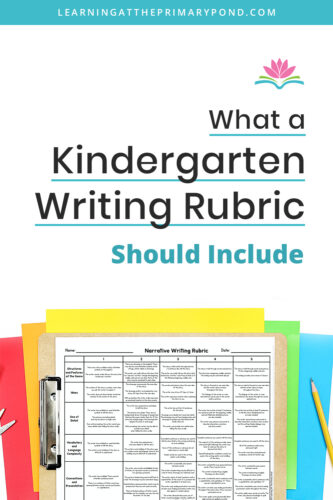
Happy teaching!

